Matador Network's Blog, page 1078
June 11, 2019
Tips for packing for trip with kids

Traveling with little kids can sometimes feel like acting out an advertisement for the latest gear. You may find yourself wondering, “Is all this absolutely necessary?” The answer is, probably not.
Sure, traveling with small kids can be a huge joy or a big headache. While the most important thing is attitude, the second most important thing has got to be packing. But whether your trip is a month in South America or a weekend at grandmother’s house in Michigan, you don’t want to spend your precious time and energy being a slave to your kids’, or your own, stuff. Here’s how to prioritize packing what you really need, and how to fight the impulse to just bring too much.
Pack, then unpack.

Photo: Evgeny Atamanenko/Shutterstock
In my family, we always have our kids pack for themselves — the first time around at least. If your child is old enough to put on their own shoes, they’re old enough to consider what they like to have with them when they goes out, even if it’s to the grocery store. So give your child a size-appropriate suitcase, backpack, or satchel; some ideas of what you’ll be doing; what the weather’s like; and how much walking, swimming, or zip lining is involved; and let them pack.
You’ll be surprised at the choices. It’s fun if everyone can do this at the same time, and make a game of inspecting each other’s luggage, asking questions about the “why” of the “what.” Round two involves taking things out and/or replacing some items with other, more practical ones. A raincoat, for example, may be more appropriate than a fancy sweater.
Don’t overdo it with clothing.

Photo: Lukasz Sadlowski/Shutterstock
When we lived in Japan, two friends came to visit us as part of their two-month summer world adventure. Each of them carried just enough clothes for a week. They were university professors and accomplished travelers, and they taught me that a week’s worth of clothing was enough for a trip of any length at all. I’ve tried to follow that rule since.
Unless your journey is a business trip, or involves a significant event like attending a wedding, your regular day-to-day clothes will be the ones you’re most likely to wear, no matter how old you are. And if by chance you don’t pack enough, there’s always the opportunity to make a memory of shopping in a new city or country.
You’re often more adventurous when you’re out of town, stepping into stores and boutiques you might not have considered if you were at home. Children are also often more aware of their surroundings, because they’re still learning how to navigate social situations, and may point out something in a shop or something about people’s behavior or accents that you wouldn’t otherwise have noticed. And shopping is itself a great way to interact with a new culture, even if it’s in your home country.
Don’t be a slave to marketers.

Photo: Halfpoint/Shutterstock
The reality is that the more stuff you have been told is “essential,” the more money you’re spending and someone else is making. The parents I polled agreed that hand sanitizing wipes are really helpful to have on hand when soap and water aren’t immediately available, that parents traveling with infants should have a change of clothes, and that extra batteries and working headsets can be lifesavers.
Beyond that, a lot of bulkier “essentials” are not actually essential at all. If you kid is very little, you can choose a baby carrier over a stroller. If your child is bigger, choose a fold-up umbrella stroller over some fancy — and much bulkier — brand. If your destination involves cobblestones, though, a sturdier stroller may be required. Bring the equipment to match the destination.
Safety and rules: Do your research.

Photo: Tomsickova Tatyana/Shutterstock
Airlines have different rules, but the FAA is the best place to wrap your mind around the regulations. According to the FAA, kids who are big enough for booster seats in cars don’t need to bring them along; on planes, the seatbelts are sufficiently safe. Of course, if you’ll be renting a car at your destination, you’ll want to make sure to indicate that you need a booster seat when you make the reservation. Even if you will need a booster seat at your destination, you can check it with your luggage, giving you one less thing to carry onto the plane.
Kids up to 24 months old can ride on your lap if you’re cool with that. You can even rent a CARES harness, designed specifically for planes for kids over a year old and between 22 and 44 pounds — if you don’t feel like buying one just for your trip. If you do want to bring aboard a car seat, it has to be FAA approved and can’t be wider than 16 inches. Beyond these basics, you need nothing extra, in my opinion. Keep it light and simple, and do without if you can.
When it comes to portable cribs, you’re probably best off bringing your own. Just be sure your baby is already used to sleeping in it. Try using it at home for at least a week before the trip, as then it will feel familiar and welcoming. Too often, the one you might have reserved in the rental or hotels is overused and doesn’t lock into place properly — so you’ll be happy you brought your own. The good news is you can check it with your luggage, and its long, narrow shape means it can fit into trunk spaces where a regular suitcase might not.
If you bring electronics, use them thoughtfully.

Photo: Kdonmuang/Shutterstock
We all battle the pull of electronics and the way the tablets and phones suck us out of our environment, and thrust us into an electronic neverland, making us automatons. So having a discussion about everyone’s expectations and setting guidelines prior to takeoff is a must. Preloading movies, games, even podcasts take the guesswork out of the online experience.
Stitcher is a great mobile app that even recommends new shows based on your original choices, as are SoundCloud and Pocket Casts. You can set up playlists ahead of time, so there’s no question of what your kids are doing on their phones once you’re in the air. If your family uses Spotify, you can all ready your playlists.
Remember that once it’s in the bag, or not, that’s the way it’s going to stay. So take the time to make the decision that works for your family. On the one hand, leaving electronics at home might even open up a brand new world to your children.
On the other hand, many parents we spoke with use electronics in an educational way, having kids practice a language with Duolingo or look up maps and possible activities online in advance. Tripit is a super app for families as well as business travelers. It automatically inserts confirmation numbers you forward to plans@tripit.com and allows everyone to add to the plan, whether it’s information about your Airbnb or the address of a cool restaurant.
Or skip the tech and go old school.

Photo: Karen Struthers/Shutterstock
Some parents use the novelty of air travel as an opportunity to go old school, sharing games from a pre-internet past, packing a deck of cards for playing gin rummy on the tray tables, or a tool to warm up small motor skills like the classic Etch-A-Sketch.
With YouTube, the older kids can even learn some sick techniques from professionals and challenge themselves to put in some time on the flight, maybe even sketching their siblings or nearby strangers (ask permission!) If you don’t feel like carrying even a mini version of the old-timey toy, you can use an online version.
Mad Libs, bingo, and even travel Scrabble pack tightly into a kid’s carry-on bag. Check your local toy store or go online to shop together with your kids. While Bananagrams — or the simplified My First Bananagrams for the littlest ones — may be a little impractical for the plane itself, it’s a great game for layovers. All the tiles fit snugly into that fun and compact banana bag and can be spread out on a table at the airport food court or at a computer station.
Rory’s Story Cubes, which have images that inspire storytelling, are a favorite for kids eight and up, too. A blank drawing pad can open up hours of fun. My kids enjoy making “monsters” by folding a piece of paper accordion style, and each person taking a part of the monster, from head to foot, unfolding it when the whole thing is done.
Be present.
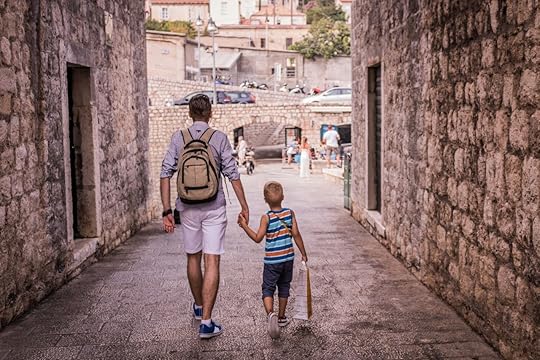
Photo: LumineImages/Shutterstock
The best way to be present on your trip is to make it about the destination and the experiences, not the stuff. Make sure the kids are as involved as possible in the planning and packing. It’s never too early to get used to taking care of yourself.
The “fun bag” is the carry-on where kids store their books, maps, paper, markers or crayons, snacks, electronics, and extra clothes in case of spills or accidents. But we’ve also had times when a kid has forgotten to pack enough underwear or T-shirts and we’ve helped them find a way to make do by washing in the hotel or B&B sink, or shopping on the street. These are all growing experiences.
As part of being present, if your next trip brings you to a new destination, take time to observe how others seem to pack and travel with their families. You may learn a few tricks. 

More like this: Stop saying your kids are too young to travel
The post How to pack for a trip with young kids and all that dang gear appeared first on Matador Network.

Canada announces plan to ban plastic

The fight against single-use plastic waste took a step forward this week. Canadian Prime Minister Justin Trudeau announced his country will implement a nationwide ban of harmful single-use plastics as early as 2021. Trudeau stopped short of listing specific plastic items that would be banned but said that a scientific review would determine the highest-priority action points. Plastic bags, water bottles, and straws appear to be at the top of the list. Specifics on the measure are to be clarified and released at a later date.
According to the report, Trudeau’s decision was largely influenced by a similar step taken by the European Union in March, which voted to ban 10 commonly used plastic items by 2021. “As early as 2021, Canada will ban harmful single-use plastics from coast to coast,” Trudeau said, alluding to fatherhood as another motivating factor. “To be honest, as a dad, it’s tough trying to explain this to my kids. How do you explain dead whales washing up on beaches around the world, their stomachs jam-packed with plastic bags?”
Canada currently recycles less than 10 percent of the plastic it uses, with much of the rest being shipped to other countries for disposal. In May, the Philippines returned 69 containers of plastic to Canada after declaring the waste illegally transported. The timing of Trudeau’s announcement is hardly surprising. His liberal government plans to make climate action a major campaign issue leading into the country’s national elections this fall.
“As parents, we’re at a point when we take our kids to the beach and we have to search out a patch of sand that isn’t littered with straws, Styrofoam or bottles,” Trudeau said. “That’s a problem, one that we have to do something about.” 
H/T: The Guardian

More like this: This map shows everywhere single-use plastics are banned
The post Justin Trudeau pledges that Canada will ban single-use plastics by 2021 appeared first on Matador Network.

Rent Tony Stark’s cabin on Airbnb

While fans may not have the superpowers required to be a part of the official Avengers crew, they can still be a part of the Stark family — minus one crucial member, of course — by staying in the cabin that Tony, Pepper, and their daughter Morgan lived in during the five years post-Thanos snap. Hosted by Ed, the secluded cabin looks exactly as it did during Avengers: Endgame, and is going for $800 on Airbnb at the time of writing.

Photo: Airbnb

Photo: Airbnb
Located in Fairburn, Georgia, the cabin is right on Chattahoochee River. It sleeps six, with three bedrooms, four beds, and three bathrooms. The amount of space you have inside doesn’t compare to the outdoor area, but there’s still a number of places to post up in aside from the bedrooms: a kitchen with modern amenities, as well as a table and chairs; a dining room; and a cozy living room with a fireplace.
Essentials like toiletries are provided, and there’s even a washer and dryer in case you need to do laundry during your stay. There’s also free Wi-Fi throughout the home, but sadly, none of Tony’s nanotech gear.
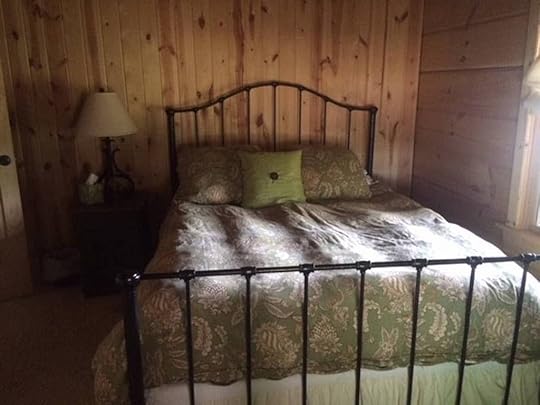
Photo: Airbnb
Another selling point is that you’ll have the entire place to yourself. You won’t even be bothered by any pesky neighbors or nosey fans, as the cabin is part of the Bouckaert Farms’ private property. What you will have to worry about though, are deer, coyotes, turkeys, snakes, and spiders — but summon that courageous spirit worthy of one of Earth’s mightiest heroes and you should be fine.

Photo: Airbnb
Just 30 minutes away from Atlanta, this cabin is the perfect hideaway from busy city life while still being within a reasonable distance from civilization. 

More like this: These 5 Airbnbs will make you feel like you’re living in ‘Game of Thrones’
The post You can now rent Tony Stark’s cabin from ‘Endgame’ on Airbnb appeared first on Matador Network.

The best things to do in Thonburi

Over the last 50 years, Bangkok has transformed from a languid city of canals to a pulsing metropolis of 10 million people, and one of the most popular destinations for party-ready tourists. Standing among downtown’s towering skyscrapers and modern shopping malls, “Venice of the East” likely isn’t the first slogan that comes to mind to describe the Thai capital. But across the Chao Praya River, a quiet Bangkok still exists in the district of Thonburi. Walking through this district on the city’s west side is a great way to meet locals outside of the hustle and bustle of Khao San Road and the rest of downtown for a day. Thonburi has spectacular temples and busy markets — it wouldn’t be Thailand without them — but enjoying the mellow atmosphere along the narrow streets is the main reason to visit. Here’s how to walk your way through Bangkok’s quietest neighborhood.
A walk on the non-wild side

Photo: C. Na Songkhla/Shutterstock
To start this walking tour, take the BTS Skytrain from downtown to the Wutthakat station. From the elevated BTS platform, looking back toward the skyscrapers of the city, you can see an 80-meter-tall white pagoda. The pagoda is at Wat Paknam, one of the most popular sights on this part of town, and it serves as a handy reference point along the walk. In the morning, residents of Thonburi congregate in the street markets to buy groceries while monks walk the narrow alleys collecting alms. You’ll see children dressed in neat uniforms walking hand-in-hand with their parents on the way to school, and retirees sitting over a newspaper and a cup of tea.
Descend to the street and walk about 500 meters north along Kallaprapruk Alley to Wat Nang Chi Chotikaram, which you’ll notice from afar — two temple buildings surrounded by six white stupas are hard to miss. It’s beautiful, but temple fatigue is a serious thing in Thailand, so it’s best to view this one from the outside and move on. There are more impressive temples along this walk, including Wat Nak Prok right around the corner. Constructed in 1748, Wat Nak Prok has undergone a recent makeover but the interior of the two main prayer rooms retain the look and vibe of the original setting. Step inside the first temple to see a golden Buddha and colorful murals painted on the walls and ceilings. In the adjacent building, a Buddha statue rests atop a polychromatic three-headed dragon.
Next, walk east to the Phasi Chareon canal and follow it toward Wat Paknam. This 15-mile canal (don’t worry, you’re not walking the whole thing) was constructed in 1866 to connect Thonburi to nearby rural villages during a time when the area was still mostly jungle and swampland.
Wat Paknam and Wat Khun Chan

Photo: Saithip Phaksai/Shutterstock
In the afternoon, the mood in Thonburi becomes far more relaxed as kids play football in the side streets and laborers enjoy a beer after work. Vendors set up food stalls along the road and fishermen cast lines into the canals. Since so few tourists visit Thonburi, don’t be surprised if you’re invited to stop for a coffee or beer by a local at one of the cafes or stands along the roadside. Follow the canal and cross over the bridge to the sprawling Wat Paknam, and be ready to climb your way up at least some of the 260-foot-tall pagoda. The fourth-floor prayer hall is like stepping into a corner of heaven — in the center of the room stands a kaleidoscopic glass stupa adorned with four golden Buddhas.
This in itself is enough to startle, but the whole setup is surrounded by illuminated serpent heads and glowing lotus flowers. The domed ceiling, supported by four gilded columns, depicts a surrealistic night sky ringed by dozens of Buddha images achieving enlightenment under the Bodhi tree. It’s stunning, and even though Thai temples are usually lively places where worshipers light candles, burn incense, and bang on gongs, visitors here tend to stand in reverential silence merely admiring the art.
After appreciating the interior, step outside for a 360-degree view of the downtown skyline to the east and local neighborhood from the balcony. Take some time and explore the smaller temples and prayer rooms of Wat Paknam before moving on, and stand in awe of the 200-foot-tall Buddha statue that is under construction. When completed, the Buddha and pagoda will dominate the Thonburi skyline.

Photo: b-hide the scene/Shutterstock
Descend the pagoda and cross the canal to the kitschy Wat Khun Chan and its collection of massive, colorful statues. The centerpiece here is a giant Buddha atop three elephants and a demon, an unusual collection at a Buddhist site but a sight to behold nonetheless. The entire temple complex has the feel of a Buddhist theme park and will probably yield your most Instagrammable photos of the day.
Beyond temples, explore the canalside neighborhoods

Photo: Nop1/Shutterstock
After Wat Kun Chan it’s time to take a break from temples and walk through pleasant residential streets to the Khlong Bang Luang Floating Market. Along the 1.5-mile walk are colorful houses, tiny cafes serving iced coffee, women sewing clothes on the sidewalk, and this being Thailand, dozens of food carts and casual restaurants interspersed. Although the Khlong Bang Luang Floating Market is officially open from 8:00 AM to 3:00 PM on weekends and holidays only, several shops are open daily. The highlight of these is Baan Silapin, or Artist’s House, a restored wooden stilt house which hosts a daily Thai puppet show at 3:00 PM. This is also an active workshop for artists who paint and draw, sometimes with an audience of admirers, so don’t be surprised if you’re beckoned to watch an impromptu art show.
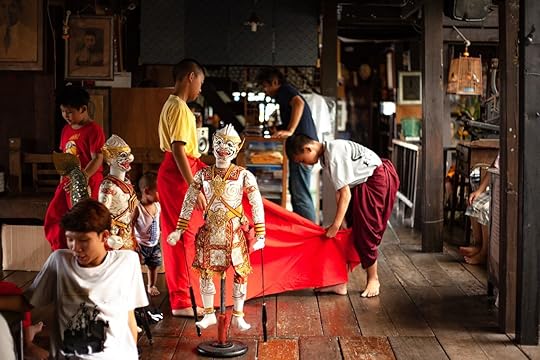
Photo: PITAKSUNTI/Shutterstock
If you have managed not to eat your body weight in street food or drink enough iced coffee to cause jitters, the floating market is also an ideal place to take a break. Get a plate of food and a cold beverage, pull up a seat at one of the canalside tables, and chill — an activity that sometimes seems so far away in this city. Assuming you haven’t completely succumbed to temple fatigue, Wat Kampaeng adjacent to the market is your next stop. Inside the main temple are more artistic murals, and around the perimeter are timeworn stupas dating to the Ayutthaya period 250 years ago.
If you elect not to stop into another temple, begin the walk back to the BTS. There are two more stops along the way, both involving food and socializing with locals. At the end of Soi Phet Kasem 28 is the large Seni Market that comes alive each evening. There are dozens of food stalls, but you’ll want to find the stall serving over 20 varieties of som tom, the spicy salad Thais eat with nearly every meal. If you aren’t ready to go back downtown, J Bar and Cafe across the street from the Seni Market is a western-style pub with assorted beers on tap. Plus, it’s delightfully air-conditioned. After walking through Thonburi, you deserve a cold beer in air conditioning.
From the Seni Market and J Bar, the Bang Wa BTS station is a 10-minute walk, though leaving isn’t required since there are hotels and guesthouses in Thonburi. Near Baan Silapin is Aiim’s Tales Canal Boutique House, a beautiful six-room Japanese-style guesthouse right on the canal. While modern-day Bangkok will never be confused with Venice, perhaps a night sleeping by the water can transport you back to old Siam. 

More like this: The best place to go in Thailand for every type of traveler
The post A walking tour through Thonburi, the quiet side of Bangkok appeared first on Matador Network.

Philippines has millions extra mango

If summertime means indulging in juicy mangoes to you, then get thee to the Philippines. Thanks to an unseasonably warm stretch earlier this spring, farms in the Philippines are loaded with 10 million extra mangoes — and they aren’t quite sure what to do with them all. According to a report from Insider, the overly warm weather has caused a bumper crop, with mangoes growing into market-ready condition at a rate far faster than farmers and vendors can handle. The bulk of the problem is taking place on Luzon, the country’s most populous island.
Mangoes grow best in warm environments that don’t experience excess rainfall. The recent heat wave in the Philippines has been accompanied by dry conditions, and the island’s mango trees have taken full advantage of the dry soil. This warm and dry weather is caused in part by El Nino, the same weather pattern that has brought all-time ski conditions to North America this year and allowed places like California’s Mammoth Mountain to extend their ski seasons throughout much of the summer. “There is a surplus of about 2 million kilos of mangoes now, and this is only in Luzon,” said agriculture secretary Emmanuel Pinol in a speech to reporters earlier this week. Pinol estimated that the country has two weeks to rid itself of the excess mangoes.
Vendors and even the federal government are developing catchy ways to market the mega-stash of mangoes. One such campaign has been dubbed “Metro Mango,” where dozens of fruit stands in the capital city of Manila will sell mangoes at an extreme discount. The government is organizing cooking classes featuring mango-heavy recipes and even an extra mango festival set for later this month. 
H/T: Insider

More like this: This Philippine island has mangoes so delicious, they have their own festival
The post The Philippines has 10 million extra mangoes after heat wave appeared first on Matador Network.

The best wine bars in Berlin
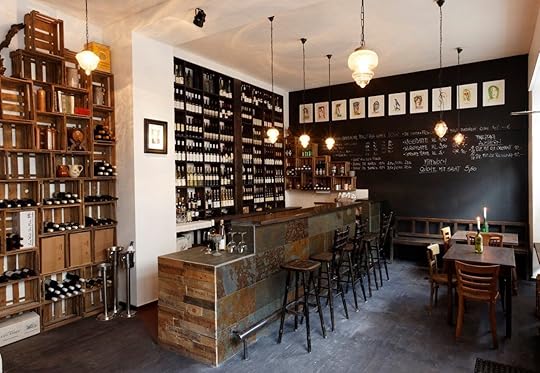
Low-intervention wine, natural wine, low-fi wine — in these times of hipster foodie terminology, everything that’s actually worth imbibing seems to have multiple monikers. Whatever you call it, the effect of low-impact wine on the world’s dining scene is undeniable. Grounded in the philosophy of “nothing added and nothing taken away,” the trend looks to continue as consumers grow more vocal about additives, production ethics, and the environmental impact of traditional winemaking. Natural wines have for years been a divisive, yet popular, topic within establishments in Paris, New York, and London. But while those cities move more rapidly from trend to trend, Berlin is a long-standing home to all things both hip and counterculture, and without nearly the fervor, the German capital has had a stronghold on the natural wine movement since well before the rest of the world caught on. From restaurants that have mastered natural wine pairings to natural wine shops that double as tasting rooms, these six wine bars prove that there is no better time to add Berlin to your list of oenophile destinations.
Jaja
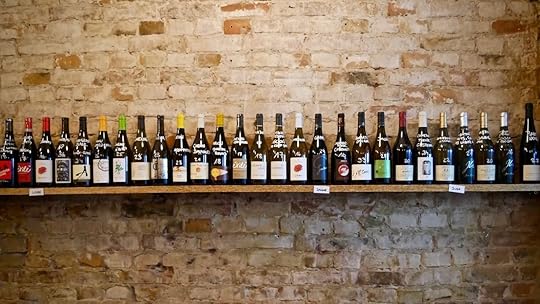
Photo: JAJA/Facebook
Jaja, in the Neukölln district of south Berlin, cements natural wine’s prowess as a solid accompaniment to a wide range of foods. Its inventive, seasonal menu rotates weekly and features locally sourced products. During warmer months, you can sit at one of the picnic tables outside for prime Neukölln people watching and grab wine by the bottle or by the glass. The wine menu has a strong French focus but stocks wines from across the growing regions of Europe, with the added bonus of serving as a sort of boutique wine shop. You can actually order bottles directly from the establishment and have them shipped to you via UPS. So, if that bottle of Hautes Côtes de Beaune from Maison en Belles Lies paired perfectly with the beef tartare, you can attempt a riff at home and at least know you got the wine part right.
Where: Weichselstraße 7, Neukӧlln
Viniculture

Photo: Viniculture/Facebook
Viniculture has helped to champion natural wine in Berlin on the city’s west side. Although it’s one of the only places to get natural wine in what was the former west of Berlin, it also happens to import and provide rare low-intervention wines from all over the world with a particular focus on Austria, Germany, Italy, and France. There are weekly tastings and a friendly staff who will listen and help guide you to the wine of your dreams. You can also sit at one of the cozy tables out front and enjoy your bottle while people watching. Much like you’re at a vineyard tasting room, Viniculture started a wine club, aptly named Vinibox, that ships subscribers three bottles of wine every three months, curated by a different staffer each time. So the server might pick the wines one quarter and the wine buyer the next, accompanied by the same tasting notes and love stories that you get in their shop. Who said hipsters aren’t innovative?
Where: Grolmanstraße 44-45, 10623 Charlottenburg
Rocket Wine
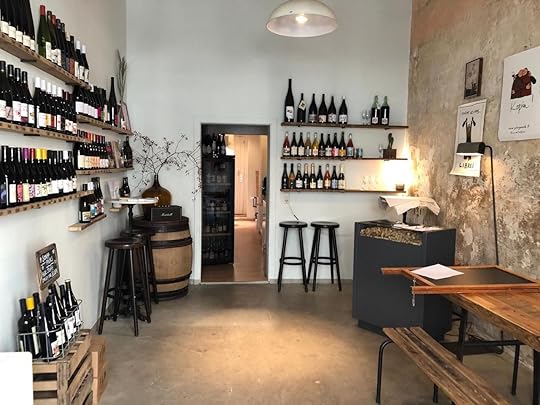
Photo: Drink naked/Facebook
Pay a visit to Berlin and you’ll somehow, someway, end up in the center of the city in a neighborhood called Mitte. No matter what it is that brings you in, stop by Rocket Wine. As the producers of Berlin’s homegrown natural wine fair Wine Rush, Rocket Wine oozes cool but with enough down-to-earth advice that you’ll actually feel welcome in its space. Enjoy wine by the glass at one of Rocket Wine’s sidewalk tables or grab a bottle to go. If, however, you’re feeling social, check its website and get tickets to one of its tastings, which feature a rotating list of natural winemakers and themes such as “bubbly night.” In addition to being educational and the perfect way to justify your craving for fermented grapes as a cool and productive hobby, these tastings tend to turn into wine-fueled social events. In them you have both a great way to meet people and a pregame for a night on the town.
Where: Linienstraße 114, 10115, Mitte
Palsta

Photo: Palsta
Natural wine and Scandinavian cuisine play off one another in this restaurant and wine bar hybrid near Berlin’s Tempelhofer Feld. Palsta looks out on the park and at night, gives the illusion of an ocean — thus adopting the name the “riviera of Neukӧlln.” The coolest thing about Palsta is that the food is as big a draw as the wine, built around a seasonal menu of small tasting plates. Learning the basics of pairing is easier the more chances you get, after all, and its thoughtful list of by-the-glass wines, along with a larger list of bottles, provides ample opportunity. A glass here will run between $7 to $9, so you won’t break the bank.
Where: Oderstraße 52, 12049, Neukӧlln
Naturales Winebar

Photo: Naturales Weinbar
Naturales Winebar is the perfect blend of Berlin grittiness and Spanish charm. It’s no-frills in the best possible way — pull up a seat at the long bar that snakes down a dimly lit interior. If you use reading glasses, bring them because you don’t want to be that person shining your cellphone light on the menu. It specializes in Spanish wines and tapas. Once the perfect pour is in front of you, relax outside with a grilled baguette and cheese.
Where: Friedelstraße 30, 12047, Neukӧlln
Ottorink

Photo: ottorink weinbar
Located in the heart of Kottbusser Tor, Ottorink’s versatility means you can stop by on your way to a night out on Oranienburger Strasse, or you can spend a leisurely evening working your way through its stellar wine list. While not every wine on the list is low-intervention, there’s enough to keep natural wine enthusiasts intrigued, making it a great option for crowds mixed with low-fi converts and traditional wine drinkers.
Where: Dresdener Str. 124, 10999, Kreuzberg 

More like this: The 7 most exciting places to travel to drink wine in 2019
The post 6 wine bars that prove Berlin is the next great natural wine city appeared first on Matador Network.

What are swimrun races
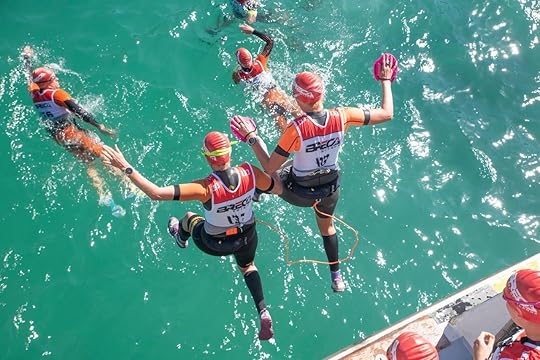
It’s hard to believe that one of the world’s most challenging endurance competitions was invented at closing time in a hotel bar. But that’s exactly what happened in Sweden in 2002, when four friends challenged each other to make it from the bar they were in on one island to another on an island over 46 miles away in 24 hours. Swimrun was born.
Now, 17 years later, swimrun competitions take place in some of the world’s most picturesque areas of natural beauty — from the emerald-colored waters of the Mediterranean and the herb-scented hills of Croatia to the deep waters of the South Pacific and the rugged trails of New Zealand. Working in teams of two, athletes run and swim the different stages continuously — running in their wetsuits, swimming in their running shoes, and carrying their food and any other equipment they may need.
Swimrun distances
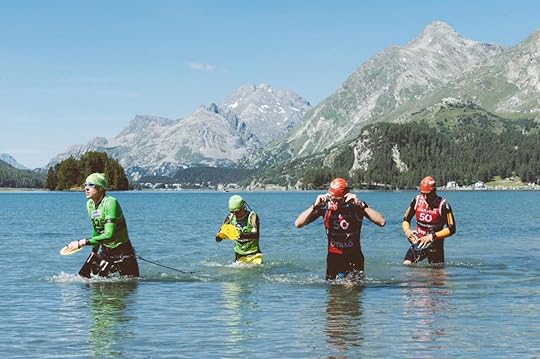
Photo: ÖtillÖ Swimrun World Series/Facebook
Like the countries that host them, each swimrun competition is different. There are no set course distances, no maximum number of transitions from running to swimming, and the swimming part of the race can include lakes or the ocean, or both. This makes it easy for each competition to showcase the very best its trails and scenery have to offer, and also means that each competition is 100 percent unique.
As a result, swimrun competition distances vary massively. The Ötillö Swimrun races were the first that emerged after that late-night bet. Although the Ötillö World Championship — held in September — is the same 40-mile distance as the original race, most of the other Ötillö races are closer to 25 miles.

Photo: Breca Swimrun/Facebook
While non-championship Ötillö races from Sweden and Sicily, to Germany and southern France, are in the 25-mile range, “sprint” distance races are much shorter. Breca runs 25-mile swimrun races in the UK and New Zealand, but it also has shorter competition options. The upcoming Breca Buttermere in the UK’s Lake District is 23 miles, but the sprints are between six and 12 miles.
That said, distance isn’t the only thing you have to worry about. Terrain and turbulent waters can be equally treacherous. When choosing a race, remember your strengths and consider factors such as the number of transitions, the length of the longest swim, and the distance you’ll be running in between each transition.
Swimrun equipment

Photo: Digoarpi/Shutterstock
The only compulsory equipment you need is a wetsuit, swimming goggles, running shoes, a whistle, and, in some races, a reusable cup. In addition to this, you may also carry optional modified pull buoys, or wear hand paddles or flippers, providing you carry them over the whole course.
This sounds simple enough, in theory. In practice, each item has to be suited to the conditions and the activity. Your athletic shoes, for example, need to be durable enough to withstand long distances, but light enough to swim in, making a light trail-running shoe the obvious choice. Equally, your wetsuit needs to protect you against water temperatures of 50 degrees Fahrenheit and be flexible enough for you to run in at the same time. Warm wetsuits for other water sports are often too stiff for the running sections, so a wetsuit specifically designed for swimrun competitions is a wise investment.
The training

Photo: bezikus/Shutterstock
There are few situations where the saying “Fail to prepare, prepare to fail” applies to more than a swimrun competition. Training for one is unlike training for any other endurance competition; your body needs to be prepared to go from running to swimming to running to swimming, over and over again, over varying distances and terrains each time.
Fortunately, even though swimming laps at the local pool and going for a long run once a week won’t cut it, swimrun competitions do give you one advantage. Rather than competing as solo athlete, in a swimrun competition, you compete in a team of two. So, not only will you have someone there to support you through the whole race, but you’ll also have a training buddy.
In training, try to emulate the transitions and distances as closely as you can, ideally somewhere outdoors with similar conditions to those you’ll be competing in. You should also be thinking about food and nutrition. Research whether any food or drink will be available at race checkpoints, plan your nutrition around that, and once you’ve found what works for you, stick to it. You don’t want to be experimenting with a new nutrition plan on race day, and certainly not if you want to avoid a bad case of runner’s stomach.
The experience

Photo: Breca Swimrun/Facebook
Swimrun is an endurance sport like no other. You compete in a team, in some of the planet’s wettest and wildest locations, away from modern technology and distractions. Not only do you have to respect your teammate, and rely on them and their strengths, but you also have to respect Mother Nature and your own physical limits.
It’s a challenge, there’s no doubt about that. But it also offers an opportunity to experience nature at its most raw, and as anyone who’s reached a swimrun finish line will tell you, the experience is well worth the effort.
Swimrun races in North America

Photo: IGNITE SwimRun/Facebook
Ötillö will be holding its first North American race in February 2020, on Santa Catalina Island. The Catalina Swimrun will be 23.8 miles and involve eight separate swimming sections, as well as over 4,000 feet of elevation changes. Registration for the event opens in July 2019.
Odyssey Swimrun holds events in July through September in Massachusetts, Maine, Michigan, and Washington states. Its long runs are shorter than the original Ötillö and Breca events, at about 17-18 miles in total distance, although its Washington’s San Juan Islands event stretches to nearly 20 miles. Registration is still open for this year’s events.
Ignite Swimrun holds races in the Midwest and along the East Coast, including Minnesota and Virginia, with longer distances in the 18-mile range and shorter ones at about six miles. The longer races for both Odyssey and Ignite are run in teams, as is the case with other swimrun events. However, you also have the option to run the shorter distance races either as part of a team or individually. 

More like this: Why coasteering is the coolest outdoor activity you’ve never tried
The post Swimruns are the wildest and wettest races in the world. Here’s what you need to know. appeared first on Matador Network.

Paparoa Track reservations
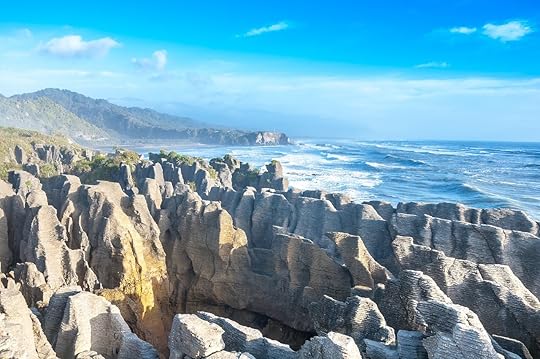
For a country lined by a rocky coastline and peaks topping 10,000 feet, nine epic backpacking routes just weren’t enough. New Zealand takes trekking and biking quite seriously, enough so that the country’s long-distance routes are self-dubbed as the nine Great Walks. And at 5:30 PM EST on Tuesday, June 11, booking reservations for the Paparoa Track, the country’s 10th such trail, will open. While today is the official opening day for reservations, the Great Walk will open to the general public in December of this year, adding 34 fresh miles to the country’s already legendary trail system.
The Paparoa Track will follow the Pororari River through Paparoa National Park, which has been one of the most inaccessible public spaces on New Zealand’s South Island. Both hikers and mountain bikers will have access to the trail, with the recommended biking route taking two days and one night. The country’s Department of Conservation suggests people take three days with two overnights to work their way across the 34-mile trail. The trailhead is located in a historic mining town and traverses across limestone gorges, beech forests, and sandstone bluffs en route to the Punakaiki Blowholes. Once at the blowholes, trekkers can reward themselves by slipping off their hiking boots and crashing overnight in a hut overlooking the Southern Alps and the Tasman Sea.
Along the way, you’ll pass through a lush rainforest and pristine coastline, under thick canopy and open sky. We broke down everything you need to know to plan your trip earlier this year, so once your reservation is secured the only thing left to do is haul yourself over to New Zealand. Reservations for the Paparoa Track, like the other Great Walks, are free — though you’ll have to shell out to crash in one of the huts on the far side. 

More like this: The Paparoa Track is New Zealand’s newest Great Walk, and it’s spectacular
The post Reservations for the Paparoa Track, New Zealand’s newest Great Walk, open today appeared first on Matador Network.

Florida outdoors: 3 travel guides
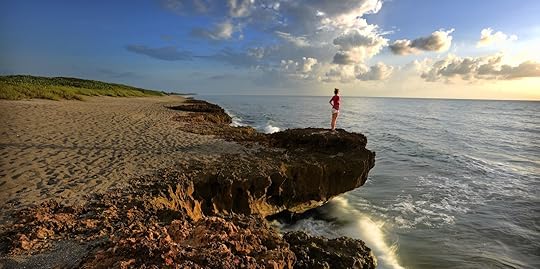
3 ways to experience Florida’s great outdoors
By: Ann Martin
OCALA
MARTIN COUNTY
FORT LAUDERDALE
Photo: Peter W. Cross for VISIT FLORIDA
#wedge-0 { background-image: url('https://d36tnp772eyphs.cloudfront.net...') }@media(min-width:560px){ #wedge-0 { background-image: url('https://d36tnp772eyphs.cloudfront.net...') } }@media(min-width:1200px){ #wedge-0 { background-image: url('https://d36tnp772eyphs.cloudfront.net...') } }
More than 1,350 miles of coastline have made the Sunshine State notable for its never-ending beaches, but when it comes to enjoying the Florida outdoors, don’t limit yourself. Take some time to go inland, as well, to check out the state’s rugged wetlands, vast seas of sawgrass, and crystal-clear springs — all of which support postcard wildlife including alligators, manatees, and rare panthers.
On your trip to experience the diversity of Florida’s landscapes, do it all — ride the Atlantic’s waves, but also ride horseback through pristine oak hammocks. Get in some beach time, but don’t neglect your mangrove time. Within the three regions profiled below, you’ll find all this and more, showcasing some of the very best this wild state has to offer.

This guide is proudly produced in partnership with VISIT FLORIDA.
Ocala
Photo: VISIT FLORIDA
In the heart of north-central Florida, Ocala’s rich history and unique topography are a dangerous combination for any too-short itinerary. From turquoise springs framed by serpentine live oak trunks to the state’s second-largest national forest, Ocala is the side of Florida you don’t often see in the glossies. And that’s fine, because you really should see it in person instead.
Juniper Prairie Wilderness
Tucked along the St. Johns River just west of Orange City, Blue Spring will transport you.
Visit
Juniper Prairie Wilderness
Your first stop in this wilderness area, which is part of the larger Ocala National Forest, should be Juniper Springs Recreation Area. Here, hundreds of tiny bubbling springs speckle the ground beneath the oak-and-palm canopy, along with a handful of big ones. You can swim in the latter — they’re always around 72°F.
Paddlers should also check out the seven-mile canoe trip down Juniper Run. And if you don’t feel the urge to conquer the 1,000-mile Florida Trail that runs right through here, an easy walk can be found along the nature trail that parallels the run. Follow it to the end for views of the gorgeous Fern Hammock Springs.
Photo: VISIT FLORIDA
Ziplining above Ocala means soaring through palm-thatched canopies…
Visit
Ziplining over canyons
Ziplining above Ocala means soaring through palm-thatched canopies, across huge lakes, along sandstone ridges, and into stunningly remote areas few visitors get a chance to see. Florida is generally flat, sure, but this one-of-a-kind experience uncovers some of Florida’s only cliffs and canyons.
Canyons Zip Line & Canopy Tours combines ziplines, rope bridges, and vertical rappels (you’ll be led through them all by experienced guides who double as wildlife experts). This certainly isn’t the only ziplining experience in Florida, but it is the longest, highest, and steepest you’ll find.
Photo: Canyons Zip Line & Canopy Tours
Long before the age of the theme park, Silver Springs offered visitors a different kind of magic…
Visit
Silver Springs State Park
Long before the age of the theme park, Silver Springs and its famous glass-bottom boats offered visitors a different kind of magic. This is one of the largest freshwater springs anywhere in the world, and you can check out the underwater wonders from the comfort (and dryness) of a boat seat. Half-hour tours run frequently — or rent a kayak or canoe and see it all at your own pace.
The park also has 30+ miles of hiking, biking, and equestrian trails for those wanting to explore on terra firma. Find it all conveniently located between the city of Ocala and Ocala National Forest.
Photo: Silver Springs State Park
Key West may be the southernmost point in the continental United States, but did you know Florida…
Visit
Ocala National Forest
Key West may be the southernmost point in the continental United States, but did you know Florida is also home to the southernmost forest? The world’s largest contiguous sand-pine scrub forest sits within the boundaries of Ocala National Forest, as do more than 600 lakes, rivers, and springs, including a trio of crystalline springs where you can soak in year-round 72-degree waters (the aforementioned Juniper Springs are just the beginning).
Photo: Shutterstock/Gadzius
Newbies can saunter through oak-lined pastures. Pros can gallop across open fields…
Visit
Horseback riding around Ocala
Newbies can saunter through oak-lined pastures. Pros can gallop across open fields and hop gurgling creeks. The beauty of horseback riding is in the surroundings, which in Ocala means swaying palms, moss-draped oaks, fox squirrels, and birds of prey. It’s just you and nature, no filter.
If you’ve been sticking to hiking and beaching, horseback riding is the thing that’ll mix up that family vacation — everyone can do it, from the kids to Grandma.
Photo: Peter W. Cross for VISIT FLORIDA This unexpected Florida landscape makes for a different kind of beach day…
.map * {
font-family: sans-serif !important;
}
.info-window-link {
display: block;
margin-top: 10px;
padding: 3px 10px;
border-radius: 3px;
background-color: #0099ff;
color: white !important;
font-size: 12px;
text-align: center;
}
.info-window-link:hover {
text-decoration: none;
}
', { style: 'max-width:150px' });
$('').append(marker.title).appendTo(info);
if (marker.scroll_to) {
$('', {
class: 'info-window-link',
href: '#' + marker.scroll_to,
}).append('Jump To').appendTo(info);
}
infoWindow.setContent(info[0].outerHTML);
infoWindow.open(map, target);
};
$('#' + id).on('click', '.info-window-link', function(e) {
e.preventDefault();
var target = $(e.target).attr('href');
$('html, body').animate({ scrollTop: $(target).offset().top - 55 }, 1000);
});
for (var i = 0; i < markers.length; i++) {
var marker = markers[i];
if (marker.lat !== undefined && marker.lng !== undefined) {
var mapMarker = new google.maps.Marker({
map: map,
position: { lat: parseFloat(marker.lat), lng: parseFloat(marker.lng) },
animation: google.maps.Animation.DROP,
locationId: i
});
if (mapBounds) mapBounds.extend(mapMarker.getPosition());
var color = marker.color ? marker.color : 'red';
var icon = _icons[color];
mapMarker.setIcon({
url: icon.url,
size: new google.maps.Size(icon.size.width, icon.size.height),
scaledSize: new google.maps.Size(icon.size.width, icon.size.height),
anchor: new google.maps.Point(icon.anchor.x, icon.anchor.y)
});
if (marker.title) {
var infowindow = new google.maps.InfoWindow({ content: marker.title });
if (markers.length === 1) {
setTimeout(function() {
openInfoWindow(marker, mapMarker);
}, 1200);
}
google.maps.event.addListener(mapMarker, 'click', function() {
openInfoWindow(markers[this.locationId], this);
});
}
}
}
if (mapBounds) {
map.fitBounds(mapBounds);
} else if (atts.zoom) {
map.setZoom(parseInt(atts.zoom));
} else {
map.setZoom(16);
}
});
});
Martin County
Photo: Peter W. Cross for VISIT FLORIDA
Bookended by the calm waters of Lake Okeechobee and the frothy surf of the Atlantic, Martin County is a blend of sandy beaches, eco-adventures, and Old Florida charm. And that’s not even touching on the local arts, history, and nearly endless sunshine.
Blowing Rocks Preserve
Visit
Blowing Rocks Preserve
This unexpected Florida landscape on Jupiter Island makes for a different kind of beach day — one that for those not in the know could be mistaken as more Aloha State than Sunshine State.
Home to Florida’s largest outcropping of Anastasia limestone — an amalgam of shell and coral shards, fossils, and sand — Blowing Rocks features natural chimney and shelf formations, along with blow holes that, under the right conditions, can shoot incoming tidal waters dozens of feet into the air. It’s great for a day of exploring, be it with snorkels, cameras, or just a comfortable beach chair.
Photo: Peter W. Cross for VISIT FLORIDA
This wild mosaic of a park starts with coastal sand hills…
Visit
Jonathan Dickinson State Park
This wild mosaic of a park starts with coastal sand hills that give way to upland lakes, scrub forests, and the winding Loxahatchee River — one of just two National Wild and Scenic Rivers in the state. Named for a shipwrecked Quaker merchant, the park mixes history (it was also a World War II training site) with natural serenity. Explore the latter via kayak, bike, horseback, or even horse-drawn tram.
(Note: Guided equestrian activities are offered Thanksgiving through Easter.)
Photo: Shutterstock/William Silver
Nimble catamarans take guests into these dazzling Atlantic Coast waterways on a private tour…
Visit
Treasure Coast catamaran tour
The nimble catamarans of Riding The Waves-Treasure Coast take two guests into the dazzling nooks and crannies of these Atlantic Coast waterways on a private tour. You’ll glide through mangrove tunnels and above seagrass beds as a certified naturalist guides your way, pointing out the area’s history and whatever wildlife may cross your path. Keep an eye out for manatees, dolphins, and diving pelicans as you get yet another look at a side of Florida many visitors never see.
Photo: Riding The Waves-Treasure Coast
Stand-up paddle boarding the Treasure Coast
Hop aboard The Ohana Bus and get ready to SUP…
Visit
Stand-up paddle boarding the Treasure Coast
Hop aboard The Ohana Bus and get ready to SUP — stand-up paddle board, if you’re not already savvy to this acronym. With some of the area’s best teachers and a huge selection of boards and equipment for all ages, The Ohana Bus will have even the newest of SUPers feeling like seasoned pros. Once you’ve got the hang of things, join a guided eco-tour into quiet, lesser-known spots accessible only by paddle.
Photo: Peter W. Cross and Patrick Farrell for VISIT FLORIDA These flat-bottom, fan-driven boats glide above the Everglades’ sawgrass-strewn wetlands…
.map * {
font-family: sans-serif !important;
}
.info-window-link {
display: block;
margin-top: 10px;
padding: 3px 10px;
border-radius: 3px;
background-color: #0099ff;
color: white !important;
font-size: 12px;
text-align: center;
}
.info-window-link:hover {
text-decoration: none;
}
', { style: 'max-width:150px' });
$('').append(marker.title).appendTo(info);
if (marker.scroll_to) {
$('', {
class: 'info-window-link',
href: '#' + marker.scroll_to,
}).append('Jump To').appendTo(info);
}
infoWindow.setContent(info[0].outerHTML);
infoWindow.open(map, target);
};
$('#' + id).on('click', '.info-window-link', function(e) {
e.preventDefault();
var target = $(e.target).attr('href');
$('html, body').animate({ scrollTop: $(target).offset().top - 55 }, 1000);
});
for (var i = 0; i < markers.length; i++) {
var marker = markers[i];
if (marker.lat !== undefined && marker.lng !== undefined) {
var mapMarker = new google.maps.Marker({
map: map,
position: { lat: parseFloat(marker.lat), lng: parseFloat(marker.lng) },
animation: google.maps.Animation.DROP,
locationId: i
});
if (mapBounds) mapBounds.extend(mapMarker.getPosition());
var color = marker.color ? marker.color : 'red';
var icon = _icons[color];
mapMarker.setIcon({
url: icon.url,
size: new google.maps.Size(icon.size.width, icon.size.height),
scaledSize: new google.maps.Size(icon.size.width, icon.size.height),
anchor: new google.maps.Point(icon.anchor.x, icon.anchor.y)
});
if (marker.title) {
var infowindow = new google.maps.InfoWindow({ content: marker.title });
if (markers.length === 1) {
setTimeout(function() {
openInfoWindow(marker, mapMarker);
}, 1200);
}
google.maps.event.addListener(mapMarker, 'click', function() {
openInfoWindow(markers[this.locationId], this);
});
}
}
}
if (mapBounds) {
map.fitBounds(mapBounds);
} else if (atts.zoom) {
map.setZoom(parseInt(atts.zoom));
} else {
map.setZoom(16);
}
});
});
Fort Lauderdale
Photo: Peter W. Cross for VISIT FLORIDA
It has postcard beaches, shipwrecks, and an extensive tangle of canals that give it the nickname “Venice of America” — Fort Lauderdale is worth a whole trip in itself. The wilds of the Everglades are in its backyard, but you don’t even have to go that far to find some serious adventure.
Airboating through the Everglades
Visit
Airboating through the Everglades
These flat-bottom, fan-driven boats glide above the Everglades’ sawgrass wetlands with supermodel-esque grace. Hop aboard and explore the country’s only subtropical preserve with an experienced Sawgrass Recreation Park captain. They’re as adept at alligator and osprey spotting as they are at whipping airboats around tight corners. Take a night tour to witness the brilliant glow of alligator eyes — vast galaxies of them — as they stare back at you from their watery abodes.
Photo: VISIT FLORIDA
Hugh Taylor Birch is to Fort Lauderdale what Central Park is to New York City…
Visit
Hugh Taylor Birch State Park
Hugh Taylor Birch is to Fort Lauderdale what Central Park is to New York City. Located between the Atlantic and the Intracoastal Waterway — with access to miles of uninterrupted beachfront — this state park is 180 acres of unspoiled wilderness set amid one of the state’s most densely populated metro areas. That is to say: You can get away from it all without going far.
From hiking, biking, and camping to snorkeling, fishing, and paddling, Hugh Taylor Birch is your Fort Lauderdale one-stop-adventure-shop, with world-class restaurants, bars, and breweries waiting for you right on the other side.
Photo: Shutterstock/Khairil Azhar Junos
This property features more than 3,000 species of rare tropical and subtropical plants, along with the state’s largest collection of native wildlife…
Visit
Flamingo Gardens
This botanical garden, wildlife sanctuary, and museum features more than 3,000 species of rare tropical and subtropical plants — along with the state’s largest collection of native wildlife, including alligators, panthers, eagles, and its namesake flamingos. Explore hummingbird and butterfly gardens, an aviary for injured birds, and habitats for Florida black bears, otters, and sea birds. The Wray Home Museum — built in 1933 — is one of the oldest residences in this part of Broward County, balancing all this nature with a glimpse into the past.
Photo: Peter W. Cross for VISIT FLORIDA
Warm and wavy, the Atlantic waters off Fort Lauderdale give surfing newbies a fun and safe place to learn…
Visit
Learning to surf
Warm and wavy, the Atlantic waters off Fort Lauderdale give surfing newbies a fun (and safe) place to learn. The area’s many surf schools offer expert advice that take the art of surfing and demystify it, helping you hop up and hang ten in no time.
One-on-one instruction is available, as are group and family classes. Seasoned surfers can take advantage of the opportunity to hone their cutbacks and aerials under the watchful eyes of talented trainers.
Photo: VISIT FLORIDA
Paddling around (and through) the city
In the “Venice of America,” the paddling options are endless…
Visit
Paddling around (and through) the city
In the “Venice of America,” the paddling options are endless. Enter Sunrise Paddleboards, who can show you the natural beauty of the area’s spectacular mangrove forests and coral reefs, or the architectural wonders of the city’s yacht-fronted mansions. If that doesn’t do it for you, how about paddle board yoga or Pilates? How about a full-moon tour with glow-in-the-dark paddles? How about tacking on a few more days to your trip to do all of the above?
Photo: Peter W. Cross for VISIT FLORIDA
.map * {
font-family: sans-serif !important;
}
.info-window-link {
display: block;
margin-top: 10px;
padding: 3px 10px;
border-radius: 3px;
background-color: #0099ff;
color: white !important;
font-size: 12px;
text-align: center;
}
.info-window-link:hover {
text-decoration: none;
}
', { style: 'max-width:150px' });
$('').append(marker.title).appendTo(info);
if (marker.scroll_to) {
$('', {
class: 'info-window-link',
href: '#' + marker.scroll_to,
}).append('Jump To').appendTo(info);
}
infoWindow.setContent(info[0].outerHTML);
infoWindow.open(map, target);
};
$('#' + id).on('click', '.info-window-link', function(e) {
e.preventDefault();
var target = $(e.target).attr('href');
$('html, body').animate({ scrollTop: $(target).offset().top - 55 }, 1000);
});
for (var i = 0; i < markers.length; i++) {
var marker = markers[i];
if (marker.lat !== undefined && marker.lng !== undefined) {
var mapMarker = new google.maps.Marker({
map: map,
position: { lat: parseFloat(marker.lat), lng: parseFloat(marker.lng) },
animation: google.maps.Animation.DROP,
locationId: i
});
if (mapBounds) mapBounds.extend(mapMarker.getPosition());
var color = marker.color ? marker.color : 'red';
var icon = _icons[color];
mapMarker.setIcon({
url: icon.url,
size: new google.maps.Size(icon.size.width, icon.size.height),
scaledSize: new google.maps.Size(icon.size.width, icon.size.height),
anchor: new google.maps.Point(icon.anchor.x, icon.anchor.y)
});
if (marker.title) {
var infowindow = new google.maps.InfoWindow({ content: marker.title });
if (markers.length === 1) {
setTimeout(function() {
openInfoWindow(marker, mapMarker);
}, 1200);
}
google.maps.event.addListener(mapMarker, 'click', function() {
openInfoWindow(markers[this.locationId], this);
});
}
}
}
if (mapBounds) {
map.fitBounds(mapBounds);
} else if (atts.zoom) {
map.setZoom(parseInt(atts.zoom));
} else {
map.setZoom(16);
}
});
});

This guide is proudly produced in partnership with VISIT FLORIDA.
The post 3 ways to experience Florida’s great outdoors appeared first on Matador Network.

June 10, 2019
Best glamping in Whidbey Island

The Pacific Northwest is known for its beautiful nature and ability to make a camping trip feel like an adventure as you pitch your tent out in the woods, or find a spot of soft sand on the beach for a night under the stars. But for those who aren’t quite ready to make the commitment toward the full experience of “roughing it,” glamping has become the ideal alternative to get in touch with Mother Nature, and Glamping Hub, the Airbnb of luxury camping rentals, provides some great options to get started.
The first stop when visitors arrive into Washington state is often Seattle, but the real beauty of the region lies just a short, 45-minute drive away: Whidbey Island. This seahorse-shaped isle in Puget Sound is one of the largest islands in the continental United States and transforms into the perfect getaway once the weather gets nice. But even with the summer rush that happens every year, the island doesn’t have many accommodations available to house all the out-of-towners, so visitors must turn to the great outdoors to find a place to stay.
Camp in romantic tents under the forest canopy.

Photo: Samantha O’Brochta
In the midst of all the evergreen trees and salty ocean water, there’s a pair of romantic glamping tents waiting to draw guests into a safe space from the elements. But the thing that makes glamping more appealing than a hotel for many is that you get the perfect balance of staying in an enclosed shelter while still hearing the peaceful chirps of the birds in the morning and breathing in the aroma of fresh woodsy air.
The WT on Whidbey is a glamping ground tucked away in the Greenbank woods. As you pull into the property, the hosts are there to greet you happily and inform you of all you need to know for your glamping holiday. There are two luxury tents, each with a different theme. The World Traveler tent gives you a taste of the adventurer life, with a vintage aesthetic reminiscent of the golden age of travel. In the Moroccan tent, you’ll find lanterns, teapots, and North African-inspired furniture and textiles. Both tents have a comfy double bed, heater, a basket of snacks and water, a bottle of wine, Wi-Fi, and the most important thing of all: insect repellent.
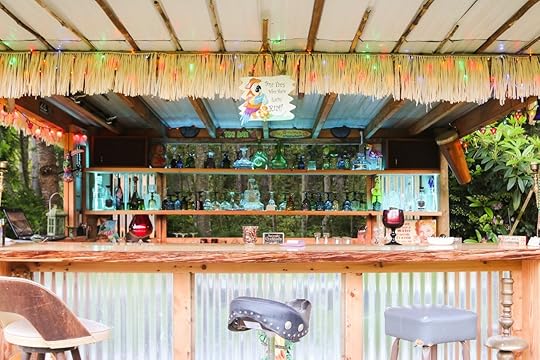
Photo: Samantha O’Brochta
There are outdoor showers and a bathroom that you won’t believe is an outhouse because it’s beautifully decorated and fully stocked with toiletries. If you want to cook your own meals, there’s a kitchen with an oven, stovetop, barbecue, and sink, as well as pots and pans. The hosts also provide fresh eggs from their chickens for breakfast, as well as s’mores fixings for a campfire. And if you bring your own spirits and mixers for a cocktail, there’s a tiki bar on site stocked with mixing tools and glassware.
Eat your way around Whidbey Island.

Photo: Whidbey Pies Cafe/Facebook
In the morning, you’ll want to make the most of your day by exploring all that Whidbey Island has to offer. Begin on the south end of the island in the town of Langley. In this seaside spot, there’s a myriad of places to grab a meal. Start out with a cup of coffee at Useless Bay Coffee Co., then grab a slice of pesto pizza at Village Pizzeria. Or, if you want a more upscale meal, Prima Bistro has a French-inspired menu and a beautiful view of the water below. If you fancy seeing a play, Island Shakespeare Festival performs various works of the Bard for free in an outdoor theater over the summer months. And for those who love to thrift shop, Good Cheer has a great selection of vintage items, and the profits go to the local food bank.
On your way out of Langley, you could make a quick pitstop in Bayview. There’s a farmers market, the farm-to-table restaurant Orchard Kitchen, and the craft beer and cider bar Taproom. If you’d rather not continue any further into the island, settle down at Dancing Fish Vineyards, where you can spend the whole afternoon drinking vino under the sun.
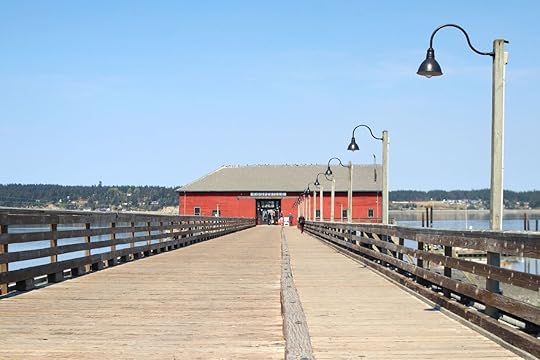
Photo: Samantha O’Brochta
As you drive north on the highway, take a short break from eating at Meerkerk Gardens, where you can walk the easy woodland trails and enjoy the local flora and fauna. Then, stop at Greenbank Farm for a slice of Whidbey Pies (try the loganberry). You’ll soon arrive in Coupeville, in the middle of the island, and a town made famous by the film Practical Magic. Knead and Feed is a waterfront spot with tasty homemade sandwiches, soups, and baked goods. Walk off all of the day’s hearty food down at the wharf, or walking past the town’s impressive Victorian-style homes.
Explore the island’s natural wonders.

Photo: Samantha O’Brochta
Continuing up the island, your chances to get out into beautiful landscapes will multiply. Ebey’s Landing National Historic Reserve is a protected spot and popular for sunset walks along the bluff. You can spot tons of local wildlife here, so bring your camera with a long zoom. Lavender Wind Farm opens in June and sells lavender products from its nearby field, which allows you to pick your own stems as well. If you like a bit of history, stop at Fort Casey State Park to visit the old military base and lighthouse. Right before you hit Oak Harbor, you can pull off to Blue Fox Drive-In for an old-timey night out at the movies.
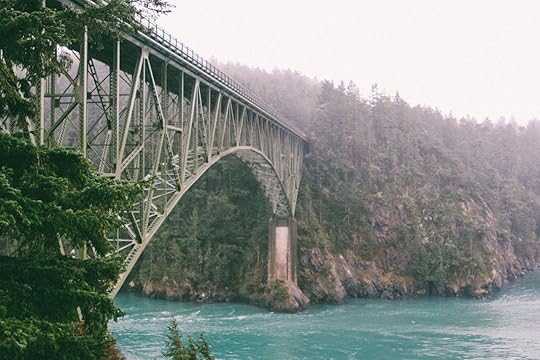
Photo: Samantha O’Brochta
No visit to Whidbey Island is complete without going to Deception Pass State Park. This famous bridge is Washington’s most visited area, and it’s clear why. The view from the top is a bit daunting as you walk across the bridge, but on a sunny day, the water below is a stunning shade of aquamarine. Even if its a bit rainy, the bridge cloaked in fog can be mystifying. If you’re glamping over the weekend, we recommend spending the entire day here hiking on the trails and chilling on the beach, but at the very least, you should squeeze in a visit to the bridge.
Fall asleep under the starry sky.
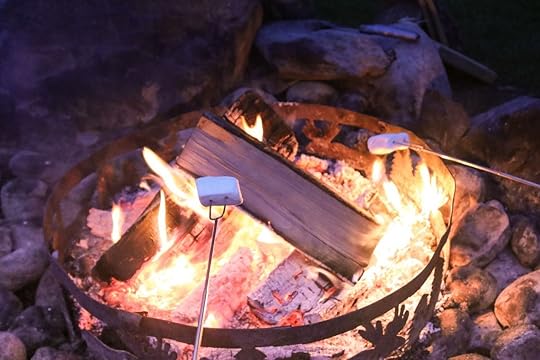
Photo: Samantha O’Brochta
At the end of the day, make a fire and roast some s’mores under the stars, then head back to your tent, zip up the bug net, and collapse onto your cozy bed. Whether you flaunt your luxury glamper status on social media or pretend that you roughed it in the great outdoors is up to you. 

Photo: Samantha O’Brochta

More like this: 9 glamping resorts you need to stay at this summer
The post This secluded glamping spot on Whidbey Island is the most relaxing Washington getaway appeared first on Matador Network.

Matador Network's Blog
- Matador Network's profile
- 6 followers



